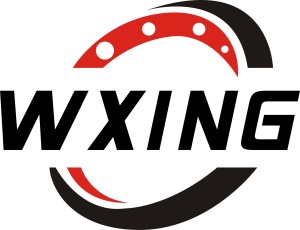PRODUCT
Bearing with conventional rust and oxidation resistance of lubricating oil
by:Waxing
2020-11-17
Here introduces the industrial bearing lubricating oil ASTM/ISO viscosity grade.
Figure 13.
Industrial lubricant viscosity grade.
ISO viscosity of routine system rust and oxidation resistance of lubricating oil rust and oxidation (
'
O)
Lubricating oil is the most common industrial lubricants.
The lubricating oil can be used in conditions of no special Timken® used by all kinds of industrial occasions;
Bearings.
In table 24.
Recommended by the conventional R&
O features characteristics of lube oil base raw materials refined high viscosity index of oil additives viscosity index minimum corrosion and antioxidant 80 pour point - the highest
10 ° C viscosity level ISO/ASTM 32 to 220 some of the low speed and/or high temperature applications require high viscosity grade.
High speed and/or low temperature applications require low viscosity grade.
Extreme pressure (
EP)
Industrial gear oil extreme pressure gear oil lubricates the most overloaded Timken® in industrial equipment;
Bearings.
They can withstand heavy equipment in the common abnormal impact load.
Table 25.
Recommended industrial EP gear oil based raw materials refined high viscosity index characteristic features of oil additives, corrosion and antioxidants, extreme pressure (
EP)
Additives (
1)
15 - load level.
8 kg viscosity index minimum pour point top - 80
10 ° C viscosity level ISO/ASTM 100, 150, 220, 320, 4601)
Extreme pressure (ASTM D 2782 industry
EP)
Gear oil by highly refined oil, combined with the corresponding suppression and additives.
They should not contain corrosion or abrasion on the bearing material.
Inhibitors should provide antioxidant protection for a long time, and in the presence of moisture protection under the condition of the bearing is not affected by corrosion.
Lubricating oil should be able to avoid the bubbles, and has a good waterproof properties.
Extreme pressure additive under boundary lubrication conditions can also prevent chafing.
The viscosity of the recommended level range is very wide.
High temperatures and/or low speed applications often require higher viscosity grade.
Low temperature and/or high speed applications require the use of low viscosity grade.
Custom message




























































































